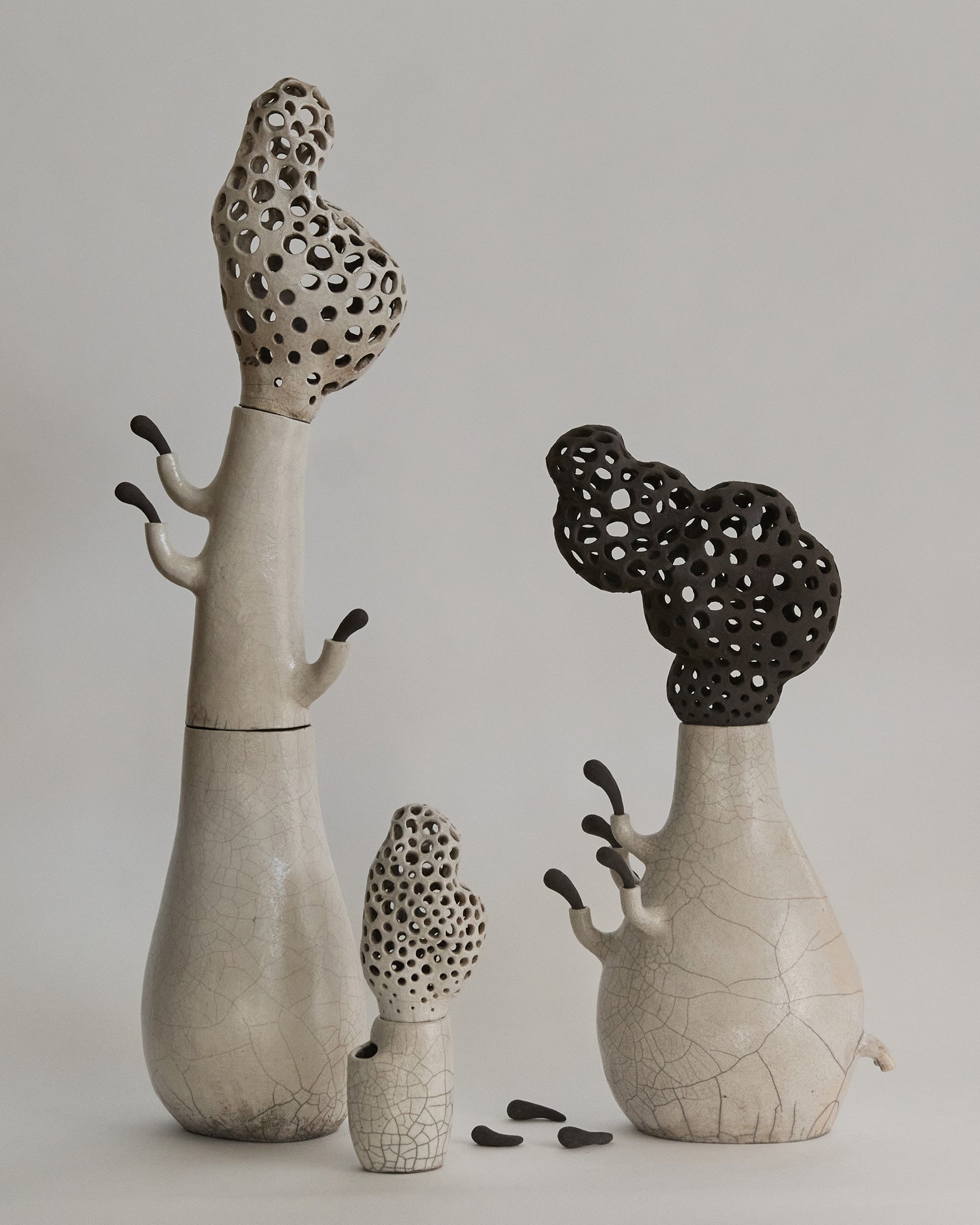A HUNDRED MILLION TIMES





I spend my time very easily, but wouldn’t know how to tell you what I do… I’m a respirateur – a breather. I enjoy it tremendously.” (Marcel Duchamp, Entretien avec Calvin Tomkins 1964)
The first impulse we make at birth is to fill our body of air, and with the first cry, to connect to life. The air penetrates our lungs and this invisible element begins to be part of us keeping us alive. Between this first breath of air that connects us to life experience and our last breath, it is estimated that we will breathe about 100 million breaths. Rhythmically, our body inhales and exhales this impalpable matter that surrounds us, connecting intimately with space, feeding us, living through it.
In this series of sculptures, an ethereal form escapes from the largest of the openings. The sinuous holed farmhouse suggests that the interior of the pieces is not empty and, at the same time, connects the interior of the piece with the surrounding space. This full volume of orifices where the air is schooled symbolizes the inter-half space, shared, the volume of air we need around us to breathe. An invisible, unconscious and repetitive act that comes with us silently as we develop for life.
When he stopped producing the work, Marcel Duchamp defined himself in 1966 as a breather: “I would have liked to work, but in my case there was an enormous laziness. I like living, breathing, not working. I do not believe that the work I have done can be of any social significance in the future. So if you want, my art would be to live; every second, every breath is a work that is not inscribed anywhere, that is neither visual nor cerebral. It is a kind of constant euphoria.” – (Marcel Duchamp, Conversation with Pierre Cabanne 1966)